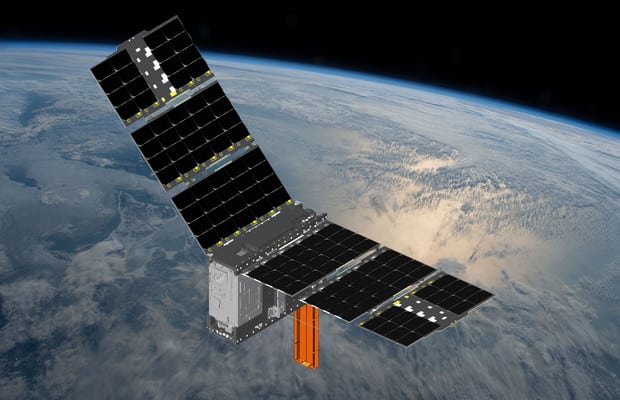Latest News

A rendering of Ohio State’s CubeRRT. Photo Credit: NASA
Orbital ATK successfully launched the company’s Antares rocket carrying its Cygnus spacecraft from the Mid-Atlantic Regional Spaceport Pad 0A on Wallops Island, Virginia, at NASA’s Wallops Flight Facility. The launch marks Orbital ATK’s ninth cargo mission for NASA.
According to Orbital ATK, the Antares medium-class rocket matched its record for the heaviest cargo load carried to date, with approximately 3,350kg of vital supplies and scientific equipment aboard Cygnus that will be delivered to the crew aboard the International Space Station. The Cygnus spacecraft will be grappled on May 24.
Once unberthed from the space station, a NanoRacks deployer will release six CubeSats including Ohio State University’s CubeSat Radiometer Radio Frequency Interference Technology Validation (CubeRRT) mission. The technology on board CubeRRT, which contains advanced sensors for observing Earth’s environment from space, is designed to solve a major problem for researchers by breaking through noisy radio transmissions that can interfere with efforts to detect from space what’s happening on Earth.
Earth emits natural microwave frequencies, which scientists study with sensors called radiometers. The data from these sensors helps determine soil moisture, sea temperature, sea ice coverage and weather. However, as the need for wireless services worldwide continues to increase, the growth of manmade radio transmissions is making it increasingly difficult to detect Earth’s natural microwave radiation, an influx called Radio Frequency Interference (RFI).
Ohio State lead the CubeRRT project, in collaboration with team members from NASA Goddard Space Flight Center in Maryland, NASA Jet Propulsion Laboratory in California and Blue Canyon Technologies in Colorado, which provided the CubeRRT spacecraft with solar power, communication, guidance and navigation systems.
Get the latest Via Satellite news!
Subscribe Now